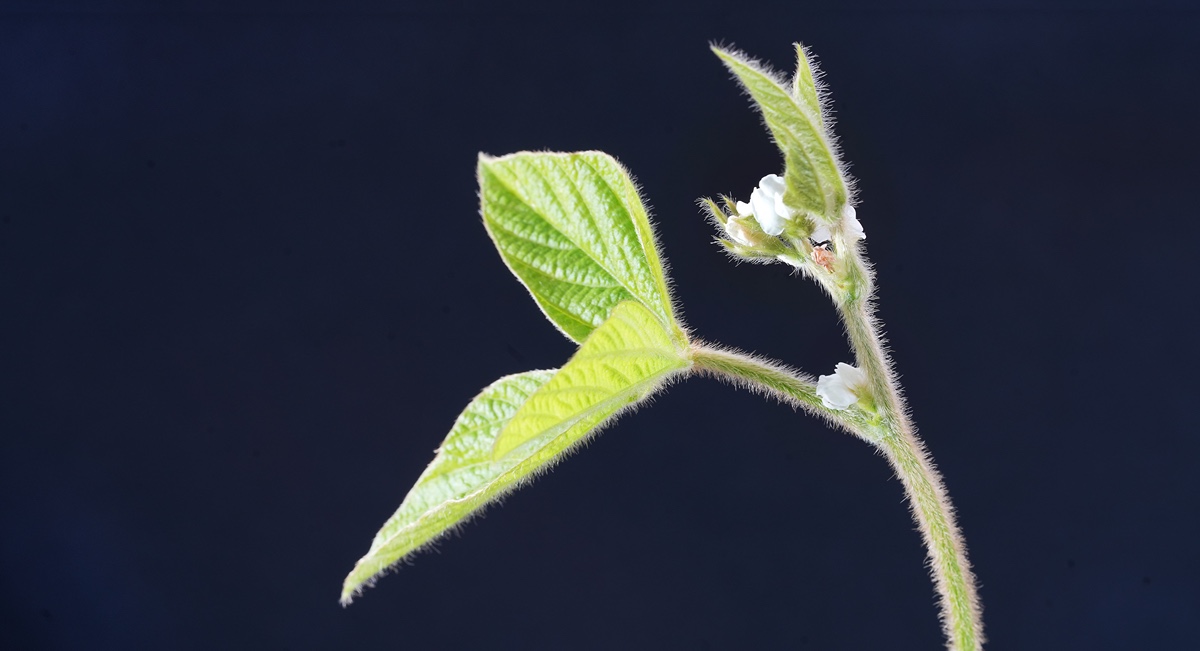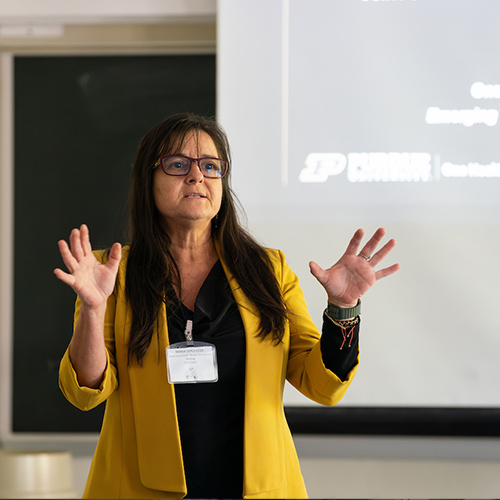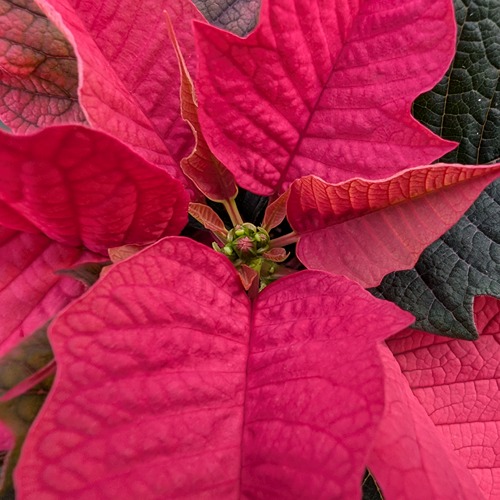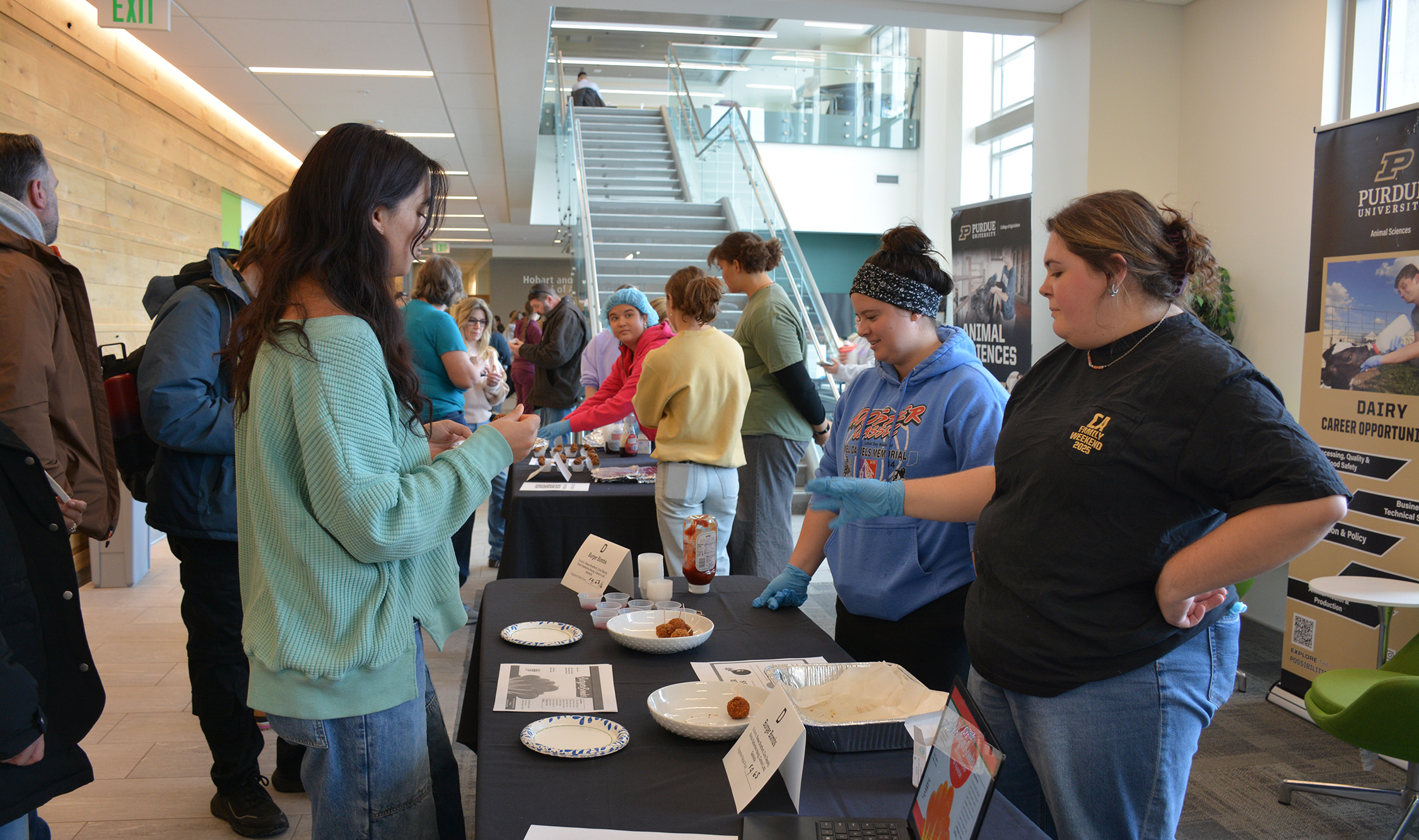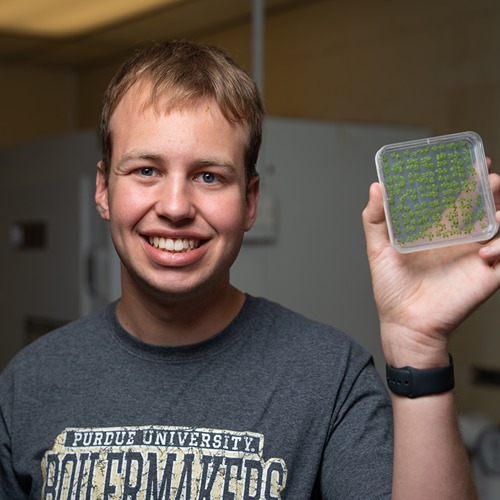Gene seekers discover atypical genes that control multiple valuable soybean traits
Study shows how genetic variation in wild soybean can benefit cultivated varieties
A team led by Purdue University soybean geneticist Jianxin Ma has developed a new biotechnological tool for the domestication of desirable traits from wild soybeans, such as resistance to leafhopper insect pests. The use of such tools, called de novo domestication, makes it easier for scientists to engineer crop improvements from wild soybeans.
“Domestication of a specialty crop from its wild progenitor used to take ancient farmers thousands of years. Now it may take us only a few years,” said Ma, professor of agronomy and the Indiana Soybean Alliance Endowed Chair in Soybean Improvement. Using relatives of wild soybean, scientists can use gene-editing methods to modify genes that create new varieties more suitable for agricultural production.
Making this possible is the discovery of two long noncoding RNA genes (lncRNA) with an unusual property. The genes share the same genetic locus — they sit side by side on the same chromosome. But these genes control multiple traits. Generally, one gene controls one trait.
Ma and 12 co-authors from Purdue and other institutions in the U.S. and China reported their results in Nature Genetics. The study identifies the first long noncoding RNA genes in any domesticated plant or animal species that can be targeted for human selection.
Co-author Blake Meyers of the University of California, Davis, highlighted how the work integrated different approaches and discoveries related to lncRNA.
“Using a more traditional approach to mapping agronomic traits in soybean led to the discovery of a single, shared molecular basis. The traits are diverse and include leaf and stem size but also insect resistance,” said Meyers, a Distinguished Professor of Plant Sciences at UC Davis.
“It turns out that these traits are regulated in an unusual manner, by genes that do not seem to produce a protein, unlike most genes, and instead produce long noncoding RNAs. Jianxin's lab did beautiful work in characterizing the regulatory mechanism and steps that led to the evolutionary emergence of this unique genetic locus,” Meyers said.
Co-author Randall Nelson, professor emeritus of soybean breeding at the University of Illinois Urbana-Champaign, lauded the synergism between research programs that produced results unlikely to have been achieved individually.
“My program is largely field-based and we developed a unique population of lines from a cross between soybean and wild soybean to map genes associated with domestication. Jianxin’s lab was able to creatively use these lines to identify novel genetic control of major differences between soybean and wild soybean,” Nelson said.
“These results not only contribute to our understanding of alternative modes of genetic control but also add to our understanding of domestication,” he said. “In the future, these results will aid in the process of utilizing the untapped genetic diversity of wild soybean.”
Ancient farmers domesticated the widely produced modern variety of soybean — called Glycine max, from Glycine soja, a wild species — centuries ago. The newly discovered lncRNA genes are highly expressed in wild soybeans.
“Highly expressed means they can make more copies of messenger RNA with specific structures to produce more copies of small RNA, which inhibit expression of several protein-coding genes underlying these domestication-related traits. But those two genes are poorly expressed in cultivated soybeans,” Ma said. “They are functional in wild soybeans, but they are not now in cultivated soybeans because a mutation occurred naturally.”
Wild soybean has tiny seeds, flowers and leaves. Everything grows larger in cultivated soybean. The pubescent form of cultivated soybean also grows longer stems and leaves in forms that lend resistance to insect pests such as leafhoppers.
In crop domestication, farmers select plants to increase their suitability for human requirements. They seek traits such as taste and plants with larger and more seeds that lead to higher yield. The domestication process, however, reduces genetic diversity, the foundation of modern breeding.
Modern domesticated soybean suffers from this reduced genetic diversity, placing new urgency on understanding the broader genetic diversity of wild species. With knowledge of the genes responsible for various traits, soybean geneticists can use molecular methods to integrate them into new domesticated varieties.
Gene-editing technology boosts their ability to translate basic research into the development of new soybean varieties with improved seed composition, nutritional traits, oil content, protein and essential amino acids, for example.
“We consider our team as gene seekers to find genetic variation for breeding better soybeans for farmers in Indiana and across the nation,” Ma said. “Our lab and colleagues previously identified several genes underlying other domestication-related traits. This collected knowledge has made de novo domestication of wild soybean and its relatives feasible.”
This research was mainly funded by the U.S. Department of Agriculture National Institute of Food and Agriculture. Additional support was provided by the United Soybean Board, North Central Soybean Research Program, Indiana Soybean Alliance and Ag Alumni Seed.
